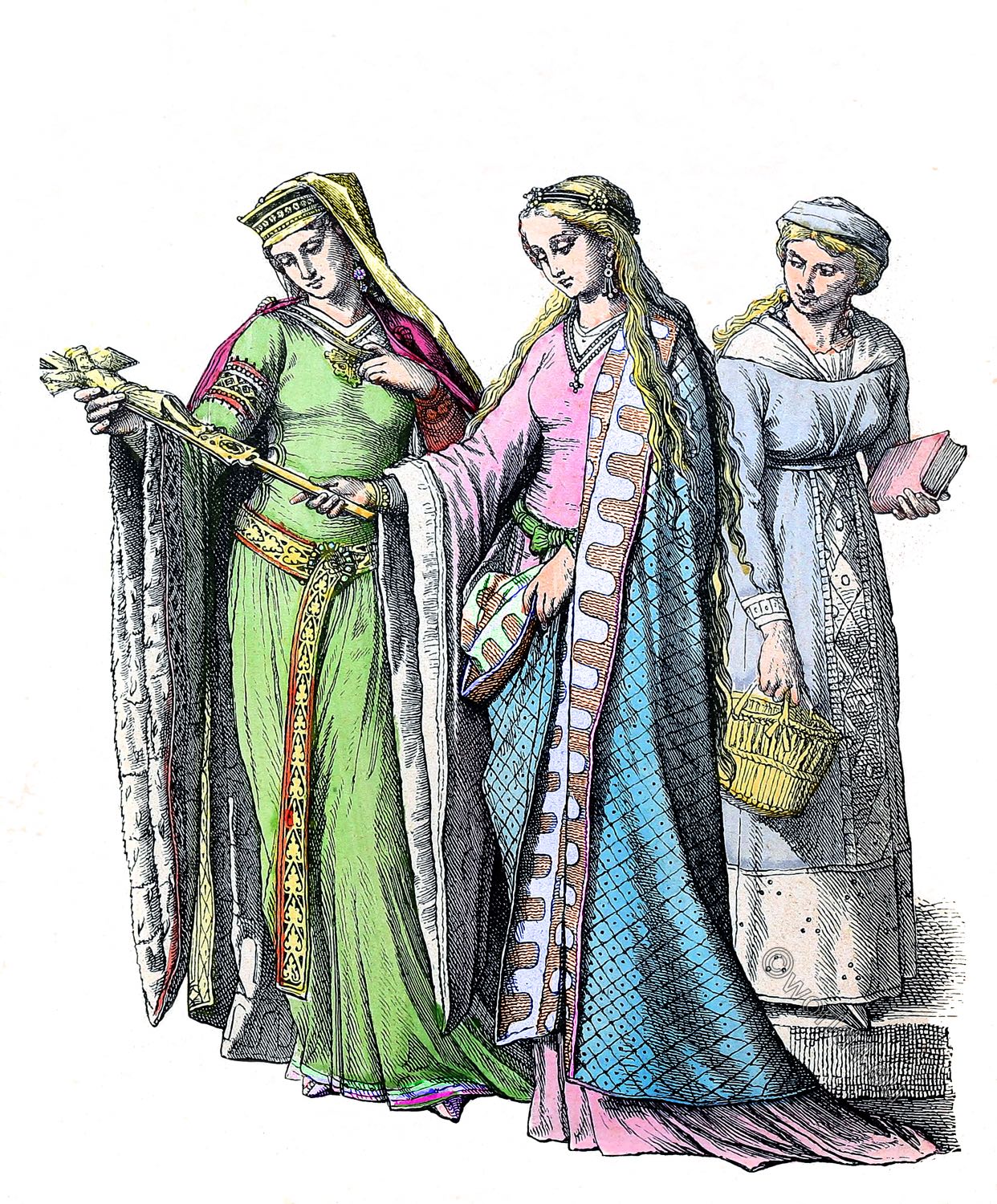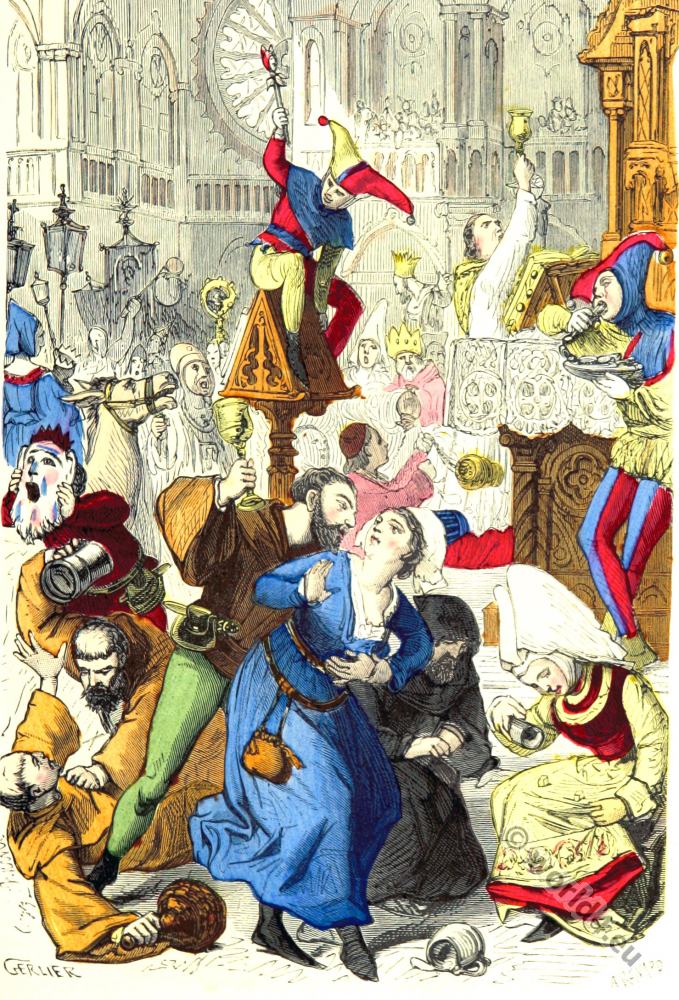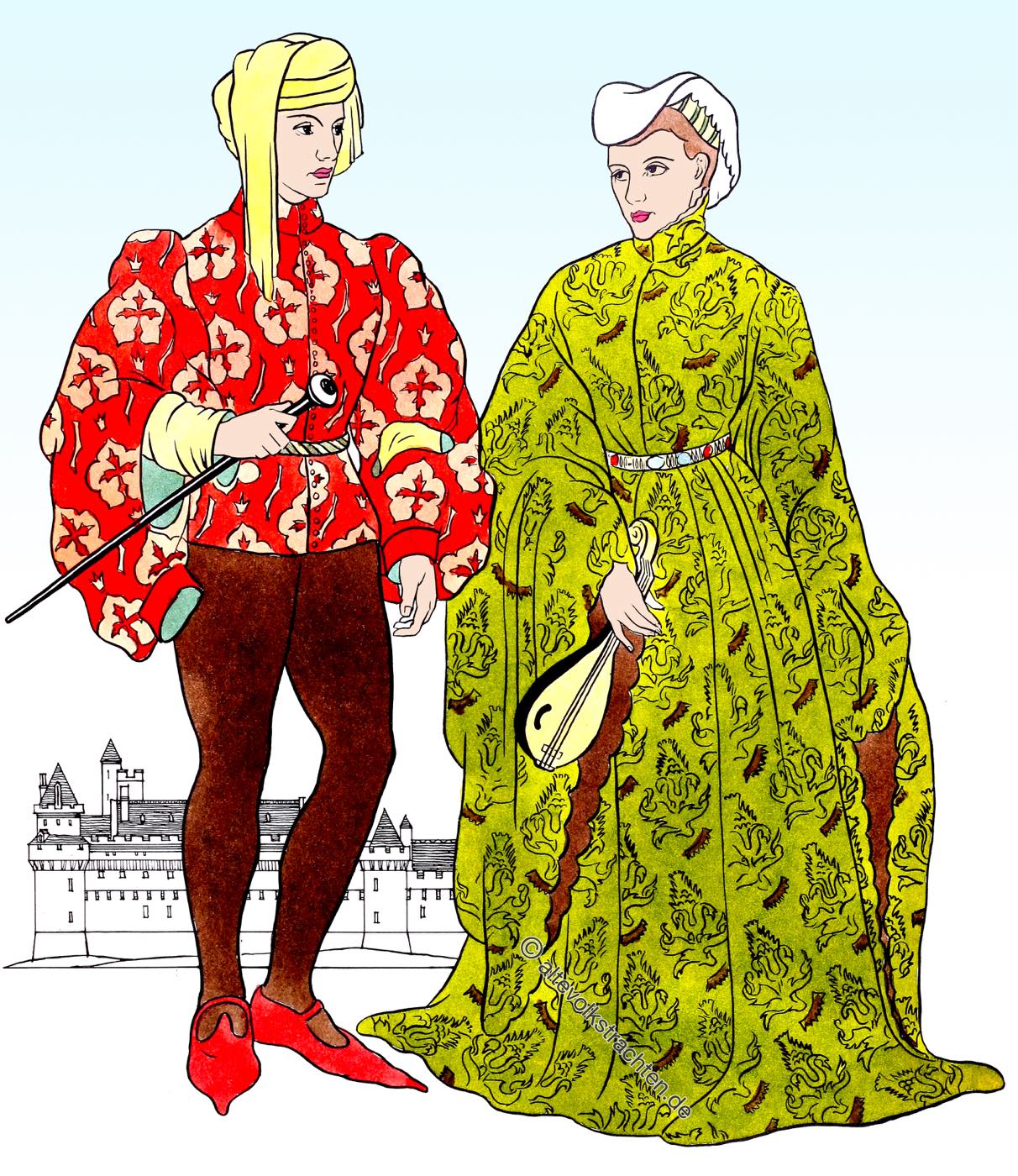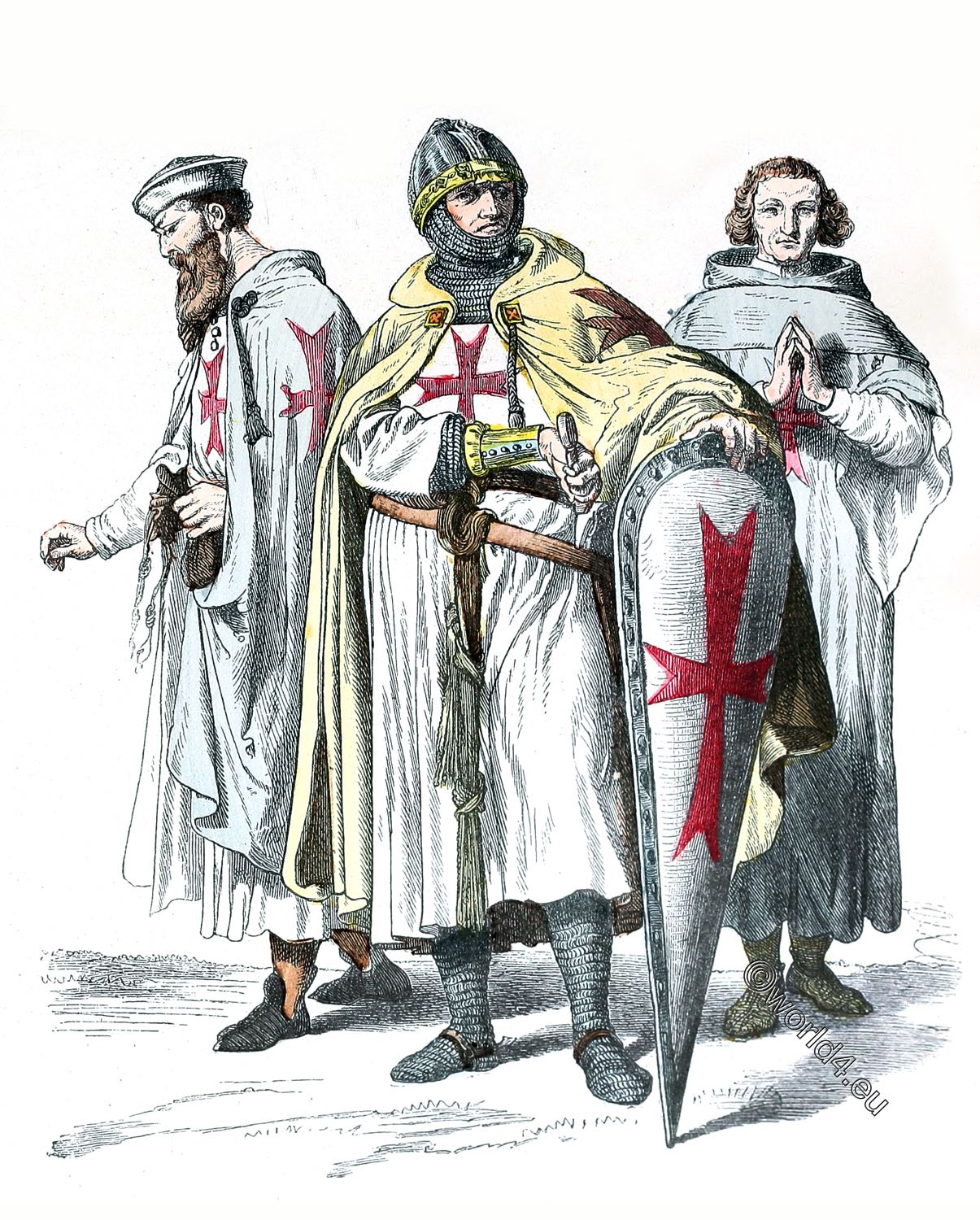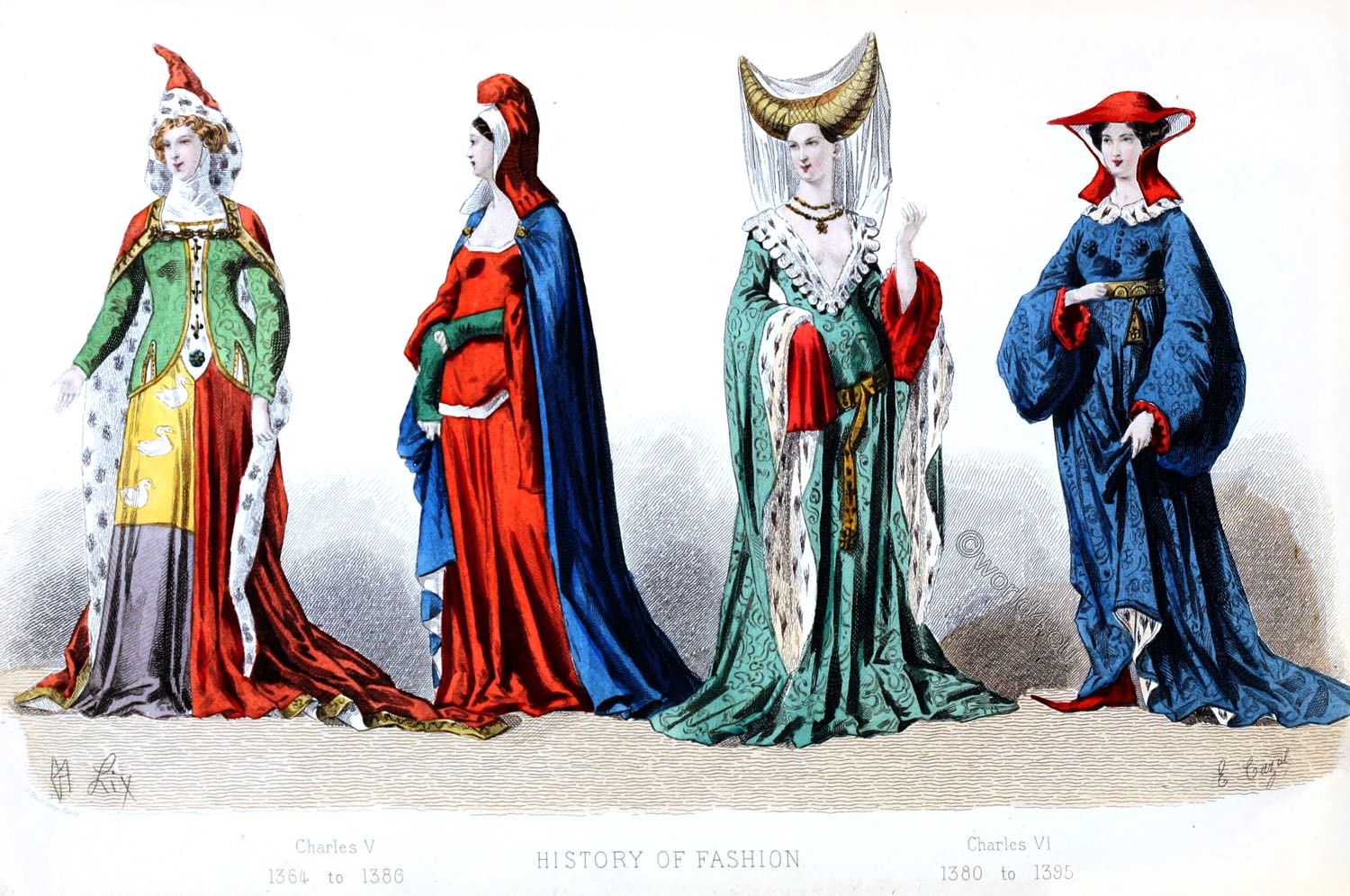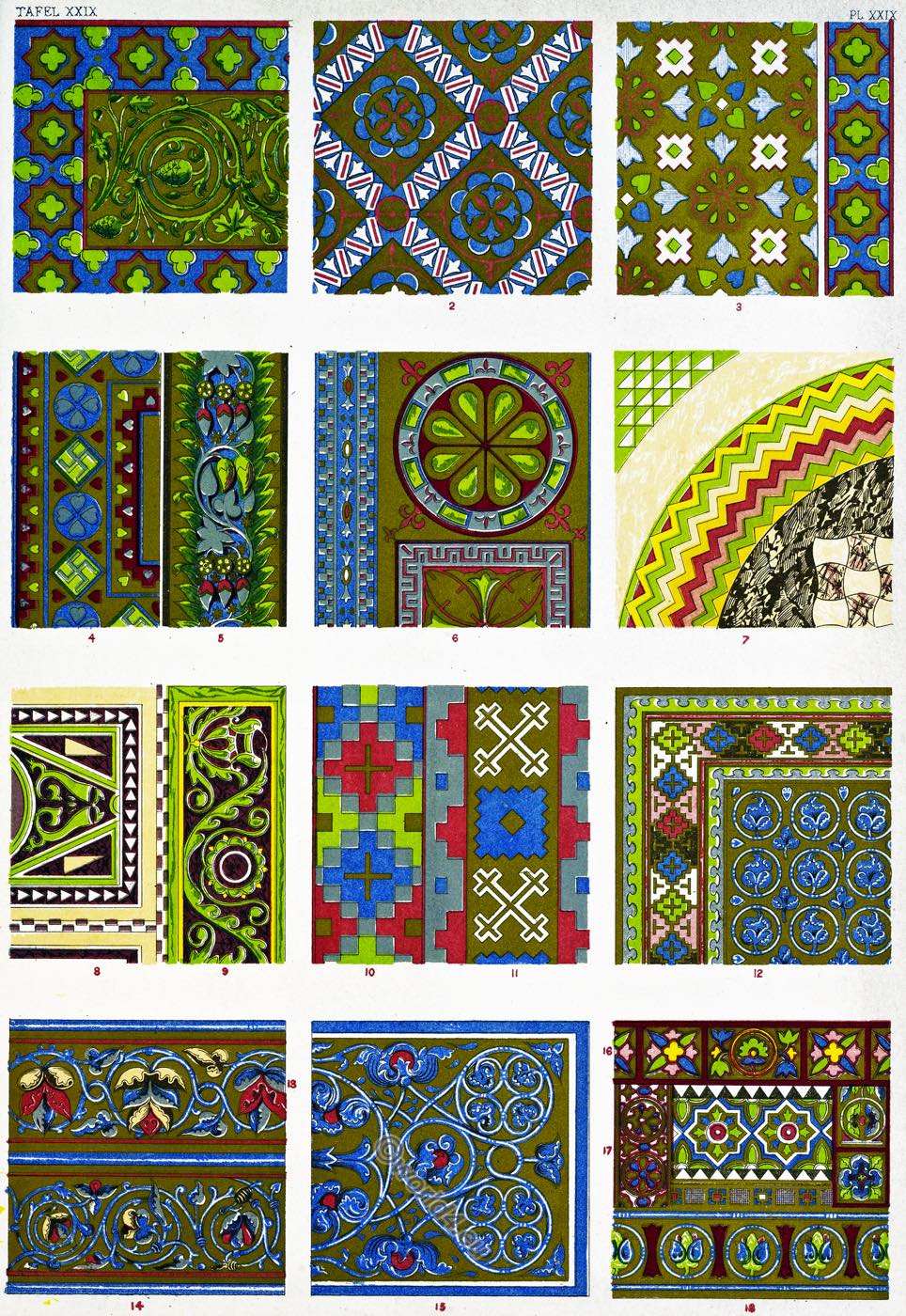Sassanian Fabrics
During the rule of the Sassanians, who reigned in the Neo-Persian empire from 250-650 A. D., and who were distinguished for their love of luxury, the arts, especially that of weaving, attained to a high degree of achievement, partircularly in Ctesiphon, the capital. Sapor II. brought weavers from Mesopotamia to Susa and other cities as early as the 4th century. When, under Justinian II. silk weaving became a monopoly, and was limited to the imperial gynaecia, many weavers were forced to migrate from Tyre, Berytus and other cities to Persia.
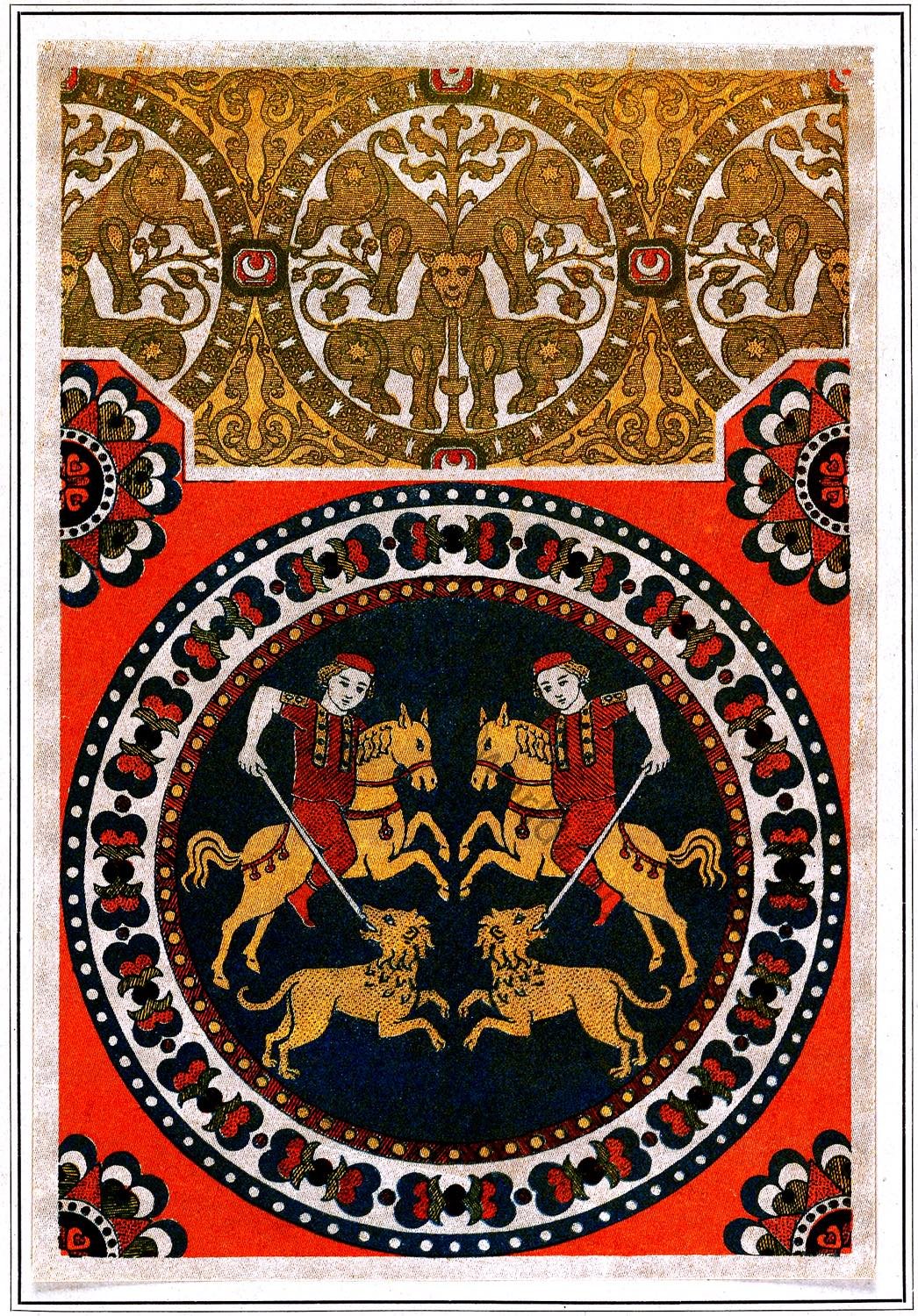
Whether this fabric, preserved in St. Ursula’s in Cologne, depicts heroes of the hunt or the circus or mythical persons is an open question. The heart-leaf scheme in the border and the rosette are typical. In the upper design, which is kept in Gorizia, we see the four-bodied sun lion, probably symbolising the four seasons. Crescent moons and stars form the border.
Thus the older Sassanian patterns, which were based on early Persian and Assyrian types, were enriched by Graeco- Roman motifs. A favorite pattern is that of princely hunters surrounded by wild animals. Griffins and other monsters are placed symmetrically on either side of the sacred tree in large roundels, squares, or between bands. It was possible to ascertain the origin of these textiles by the fact that they bore the same patterns as did the garments reproduced on the rock-tombs of the Sassanian princes in Takibostan.
According to Lessing, the so-called Yezdigerd fabric from St. Ursula in Cologne (named after Yezdigerd II., a grandson of Chosroes II.), which is patterned with kings riding on winged griffins surrounded by lions and ibexes, is certainly of Sassanian origin. Another hunting scene is framed in circles which again contain smaller ones with single animal designs. The large roundels are each linked up by small circles, of which those at the sides contain horsemen, and those at the top and bottom eagles and deer.
Other fabrics are patterned with groups of animals: lions or ostriches under trees, either side by side or one above the other. Several extant pieces of weaving prove that Perso-Sassanian fabrics must have found their way to China from where Persia imported her raw silk.
A later fabric (11th century) with sitting griffins and a frame composed of eight pairs of birds is certainly based on a Persian pattern, but contains so many Chinese elements in its details that it was probably woven in China. Another piece of weaving is undoubtedly based on Sassanian motifs, though it was woven in China in the 7th or 8th century, namely the fabric used as a banner by the Mikado Shomu representing Choroes II. hunting. He is recognizable by his peculiar headgear. The figures are set in a roundel composed of small circles. The Chinese origin is proven by the Chinese symbols on the flanks of the horses denoting «mountain» and «luck». This influencing of the Orient by the Occident may be traced till the beginning of the 14th century, when a contrary movement sets in and Chinese motifs are introduced into the west where, however, they are considerably modified.
Source: An Encyclopædia of Textiles: From the Earliest Times to the beginning of the 19th century by Ernst Flemming. Published by Ernst Wasmuth, Berlin c. 1912.
Related
Discover more from World4 Costume Culture History
Subscribe to get the latest posts sent to your email.

